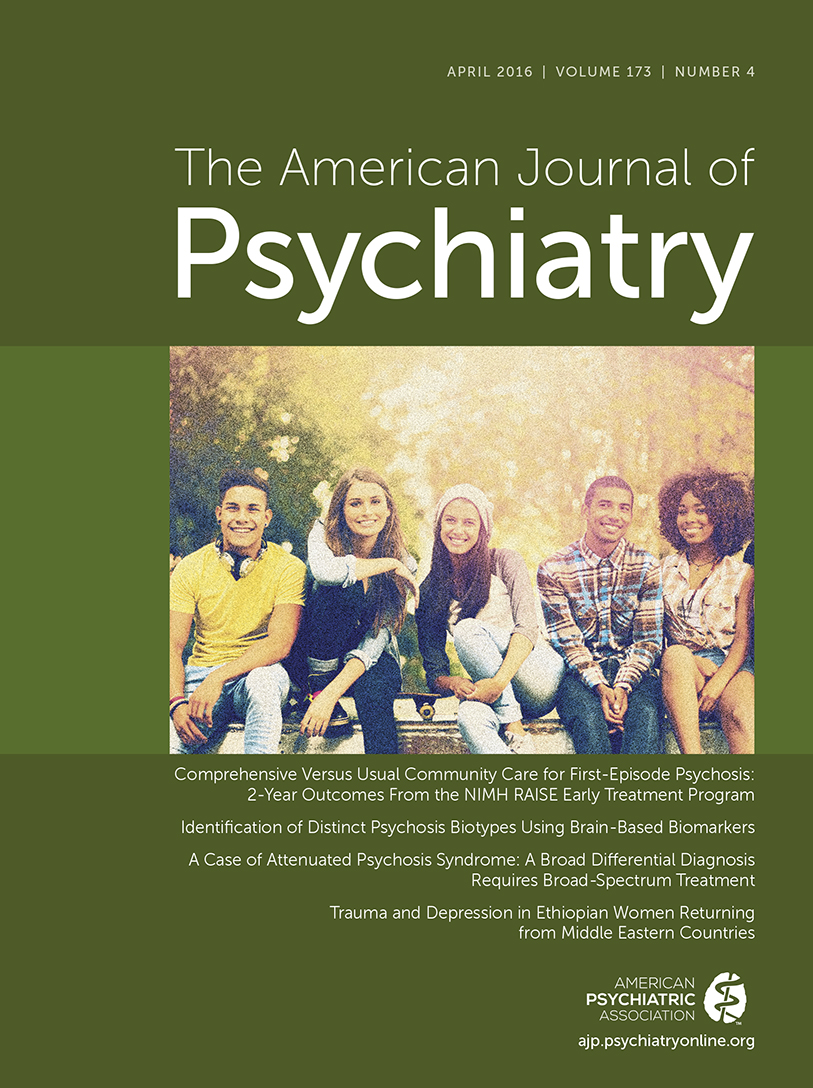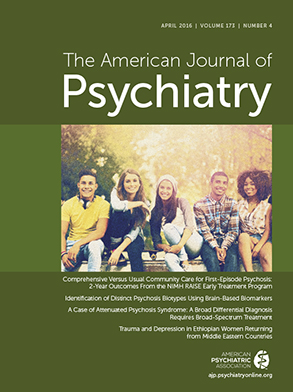The co-occurrence of manic and depressive symptoms was acknowledged with a full chapter in Kraepelin’s
Manic-Depressive Insanity and Paranoia (
1), the first description of manic-depressive illness as an entity. Investigation of the clinical significance of these mixed states has accelerated markedly over the past 15 years, and cumulative findings led to substantial changes to their definition and diagnostic status in DSM-5.
DSM-III, DSM-III-R, and DSM-IV restricted the term “mixed episode” to individuals who exhibit full manic and major depressive syndromes simultaneously for at least a 1-week period. DSM-5 instead recognizes mixed symptom pictures with the mixed episode specifier for manic, hypomanic, and major depressive episodes and widens diagnostic boundaries with the requirement that only three of the criteria symptoms from the opposite pole be present. On the other hand, DSM-5 restricts use of the mixed specifier to cases in which symptoms from the opposite pole have been present the “majority of days” of the entire episode. Importantly, although previous editions of DSM confined mixed episodes to bipolar disorder, in DSM-5 the mixed episode specifier can be applied to manic, hypomanic, or depressive episodes of bipolar disorder as well as to episodes of major depressive disorder.
Why should clinicians be alert to mixed states? Regardless of whether the dominant syndrome is mania or depression, the coexistence of symptoms from the opposite pole is associated with greater severity (
2) and portends a lower likelihood of recovery with treatment (
3) as well as poorer short-term and long-term prognoses (
4). Mixed states have also been shown to have a degree of diagnostic stability across serial episodes (
5), and the presence of manic symptoms during an otherwise depressive episode increases the risk of switching within that episode (
2). Among patients who have previously experienced only depressive episodes, subthreshold manic symptoms increase the likelihood that, in time, a full manic or hypomanic episode will occur (
6).
Taken together, these findings support increased sensitivity to mixed states among clinicians. Do research findings also inform treatment selection of depressed patients who present with mixed states? In this issue of the
Journal, Suppes et al. (
7) describe a trial of lurasidone that constitutes the first placebo-controlled study targeting individuals suffering from a major depressive disorder who also have coexisting manic features. The resulting number needed to treat of 3, and number needed to harm of 23, were quite low and high, respectively. Notably, treatment effect sizes in this sample of depressed patients with mixed features was actually somewhat larger than those reported both for purely depressed patients treated with lurasidone monotherapy (
8) and for purely depressed patients treated with lurasidone as adjunctive therapy (
9).
Given the likelihood that many patients diagnosed as having major depressive disorder with mixed features will eventually prove to have bipolar disorder, and the indications that antidepressants are relatively ineffective, and potentially dangerous, when used to treat bipolar disorder, lurasidone appears to be an attractive treatment choice despite its high cost and the attendant out-of-pocket expenses for most patients.
A number of caveats apply, however. First, when reviewing any literature that concerns relationships between treatment response and diagnostic subtypes, clinicians should remember that differences in response rates between conditions are not equivalent to differences in effectiveness as quantified by effect sizes. A lower placebo response rate for one diagnostic category, e.g., mixed states, can account entirely for the seemingly higher rate of improvement or recovery seen in a comparison category, e.g., non-mixed states. Notably, there appear to be no head-to-head comparisons between bipolar depression groups with and without mixed features as to response rates or effect sizes for any mood stabilizer or atypical antipsychotic. Thus, in the absence of direct evidence that medications that are effective, in comparison to placebo, for bipolar depression will not also be effective, relative to placebo, for bipolar depression with mixed features, cost considerations for a new agent loom larger. Indeed, a recent meta-analysis showed pooled effect sizes in placebo-controlled trials targeting bipolar depression of less than 6 for carbamazepine, valproate, lamotrigine, quetiapine, and olanzapine combined with fluoxetine (
10). The number needed to treat for lamotrigine was 23.6, but it ranged from 4.0 to 8.8 for the remaining drugs. All of these medications can be prescribed generically. They have not been validated for mixed states, because pharmaceutical companies lose their financial incentive to conduct the additional clinical trials necessary to validate older drugs’ effectiveness in new conditions when they become generic.
The design of the Suppes et al. study involves what is likely to have been an important departure from the DSM-5 criteria for a mixed specifier. First, the requirement that the mixed state exist throughout the major depressive episode was relaxed to one in which the persistence of manic symptoms for only 2 weeks before screening sufficed. Second, the DSM-5 mixed specifier requires a minimum of three manic symptoms, but participants in the Suppes et al. study needed only two. This is particularly notable given that the effect size for lurasidone against placebo was substantially lower for individuals with three manic symptoms than for those with only two. Also relevant are earlier findings that the presence of three symptoms provided an optimum prediction of which patients eventually switched to a bipolar disorder during a lengthy follow-up (
6).
Thus, clinicians now have available a well-tolerated atypical antipsychotic that is the only medication expressly shown to be effective in bipolar depression that is accompanied by at least some manic symptoms. The question of whether it offers benefits over those mood stabilizers and atypical antidepressants that have been shown to be useful in bipolar depression and are now available in generic form may well remain unanswered. Third-party payers now routinely require clinicians to justify the use of expensive medications before inexpensive ones have been tried, and it remains to be seen whether the evidence from this study will satisfy them.

